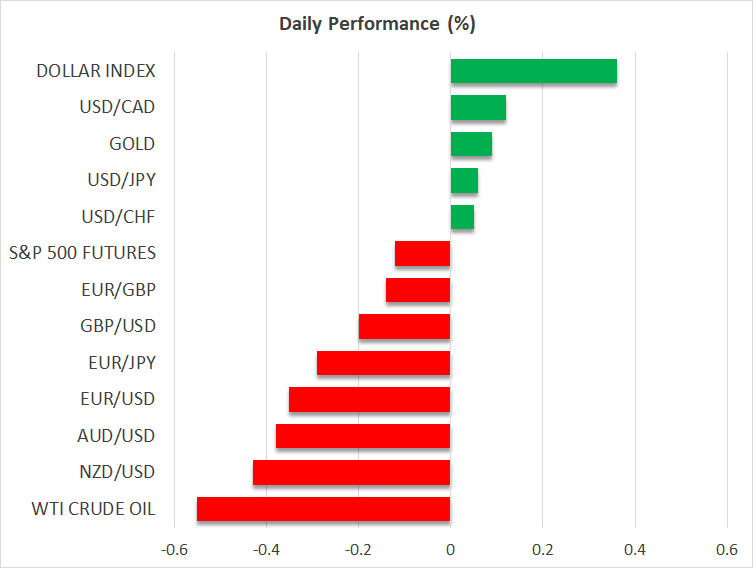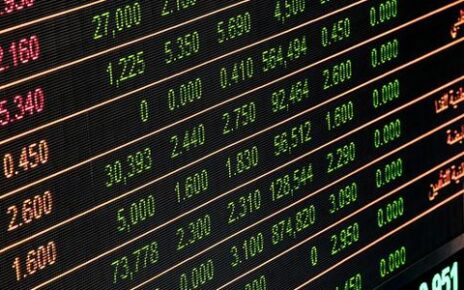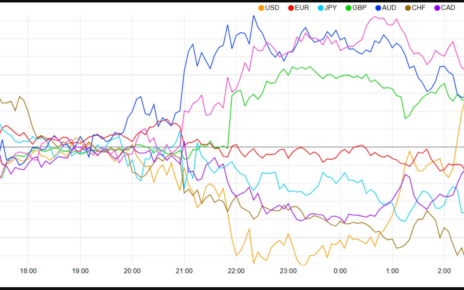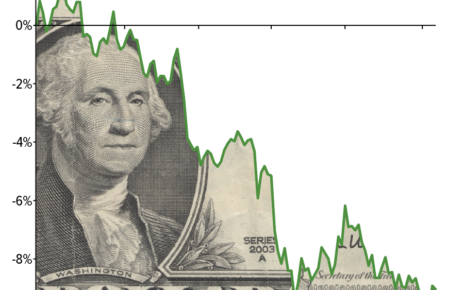The dollar edged through a day of mixed moves as markets waited for the Federal Reserve’s policy decision, with traders parsing where new projections might tilt policy next. While expectations leaned toward a hold at the current rate, attention centered on what the Fed’s dot-plot and inflation outlook would reveal about the balance of risks. At the same time, the Bank of Japan left policy unchanged, offering no clear guidance on when or if the next rate move would come. Equities softened on risk-off sentiment, and gold extended its ascent to new highs as investors sought safe havens amid geopolitical and tariff-related uncertainty. Against this backdrop, the currency complex reflected a cautious mood, as some major pairs drifted, while others showed renewed strength in selective corridors. Taken together, the day painted a portrait of a market awaiting clarity from policymakers while weighing higher-for-longer expectations against structural inflation risks and external tensions.
Dollar Market Snapshot Ahead of the FOMC Decision
The U.S. dollar traded in mixed fashion across the board, showing modest gains against the Japanese yen and the Australian dollar, yet slipping versus the euro, the pound, and the Swiss franc. It finished the prior session broadly flat against the New Zealand dollar and the Canadian dollar, also known as the loonie, before resuming a gradual rebound against the majority of its peers in the current session. These movements underscored a sell-off that had gathered pace as tariff concerns and inflation trajectories clashed in the minds of investors. The market appeared uncertain about the Fed’s intentions, reflecting a wider conundrum about whether policymakers would signal a steeper retreat from inflation or maintain a rhetoric aimed at sustaining price stability without derailing growth.
The broader dynamic that shaped these currency shifts centered on expectations for monetary policy and the global growth impulse. Investors had become increasingly focused on tariffs’ impact on growth rather than inflation, a shift that correlated with a softer U.S. dollar alongside declines in stock markets and bets that the Fed might deliver more rate cuts than implied by the December dot plot. Just a week earlier, market participants were positioned for three quarter-point cuts within the year, representing a more aggressive easing path than what officials had projected. However, a surge in inflation expectations offered resistance to that view, with futures markets recalibrating to price around 60 basis points of reductions in 2025. This recalibration suggested a tug-of-war between policymakers’ inflation fight and a growth slowdown, a tug-of-war that was likely to continue until the Fed’s projections for inflation and growth were updated and communicated in the policy statement and dot plot.
The phrase “mind the dots” captures the essence of the current market psychology: traders were unsure whether the Fed would tilt toward growth concerns or reinforce vigilance toward inflation, potentially using the projection balance to calibrate expectations for future policy changes. In practical terms, the market anticipated that the Fed could either revise higher its inflation outlook while trimming growth forecasts, or maintain a balanced stance that acknowledges inflation risks without prematurely signaling a weakening in the stance on price pressures. Whether the downside growth revisions would be enough to align with investors’ expectations remained an open question, and the outcome would likely hinge on fresh data and the Fed’s interpretation of incoming information about inflation, demand, and the external environment.
From a statistical perspective, the Atlanta Fed’s GDPNow model offered a potentially dovish tilt by signaling contraction in the first quarter of 2025. If the Fed’s rhetoric leaned in that direction and a new dot plot showed more aggressive easing than in December, the dollar could face renewed downward pressure. This anticipated path reflected a core market belief: that a dovish stance in the context of soft growth signals could undermine the dollar more broadly, particularly if rate cuts were expected to outpace those priced in by the market. The interplay between the Fed’s projections and market expectations around rate paths remained the central fulcrum of dollar dynamics, and traders would be paying close attention to how the Fed characterizes inflation risks in the context of a slower growth outlook.
In this environment, currency markets—especially pairs involving the dollar against the euro, pound, and Swiss franc—displayed sensitivity to shifting risk appetite, data surprises, and the evolving narrative around tariffs and growth. The mixed directional bias highlighted a broader theme: investors were torn between defending against inflation and preserving upside in growth, a tension that often translates into choppier price action and more pronounced reactions to policy communications. As markets waited for the Fed’s decisional clarity, macro dynamics such as tariff-driven growth concerns, wage and price momentum, and global demand signals continued to influence the greenback’s path.
Fed Outlook, Projections, and Market Expectations
Turning to the Federal Reserve’s path, traders anticipated that the policy decision would be less about interest-rate moves in the near term and more about the messaging embedded in the Fed’s dot plot and projections for inflation and growth. The debate centered on whether the Fed would acknowledge a softer growth trajectory while maintaining a vigilant stance on inflation, or whether it would acknowledge higher inflation pressures that might warrant a slower path to policy normalization. The consensus in many market circles was that policymakers could opt to hold rates steady in the near term but adjust the inflation and growth narratives to reflect evolving data, potentially signaling a dovish tilt if growth remained weak and inflation cooled more slowly than expected.
One crucial variable for the Fed’s calculus would be how it reconciled the inflation narrative with the disinflation and demand dynamics evident in recent data. If inflation expectations remained elevated or rose further, the Fed might resist a more pronounced easing path despite weaker growth indicators. Conversely, if inflation showed clear signs of stabilization or retreat while growth remained constrained, the Fed could adopt a more pronounced accommodation signal in its projections, including shifts in the dot plot that implied more rate cuts than previously anticipated. Either path would have meaningful implications for the dollar, given that financial markets price in expectations about policy rate trajectories as a primary driver of currency valuations.
Investors also scrutinized the potential for growth revisions to influence the Fed’s communications. A scenario in which policymakers revise higher their inflation projections while trimming growth forecasts could create a delicate balancing act—signaling that inflation remains a priority while acknowledging the fragility of the expansion. The caveat, of course, was whether any downward revisions in growth would be substantial enough to corroborate the market’s expectations for easier policy, or whether the Fed would resist such a tilt in the face of stubborn price pressures. In this context, the dot plot’s direction would be critical, with a clearer pathway to more pronounced rate cuts reinforcing a risk-off impulse for the dollar and a more muted or even buoyant trajectory for risk assets that benefit from lower financing costs.
The market’s pricing of 60 basis points of cuts in 2025 reflected an ongoing recalibration of the rate path in light of macro signals. Should the Fed illuminate a trajectory that includes a more aggressive easing component than anticipated, the dollar could face additional downside pressure, particularly if such a path were consistent with stronger disinflation expectations and a softer growth outlook. The interplay between the Fed’s projections and the market’s pricing would be the focal point for traders as they assessed how much of the anticipated easing was already embedded in asset prices and whether fresh communications would push expectations toward a more aggressive or a more cautious stance.
In sum, the Fed’s decision would likely hinge on the balance of risks between inflation persistence and growth softening, with traders parsing how the new projections align with data momentum. The potential for a clearer signal on rate cuts in 2025 loomed large, as did the possibility that the Fed would revise its inflation forecast higher or lower, and adjust its growth projections in a manner that would affect the dollar’s value across major currencies. The outcome would be pivotal for both currency markets and broader risk sentiment, as investors reassessed the timing and magnitude of future monetary policy support.
BoJ Hold, Yen Trends as No Clear Rate-Hike Cues Emerge
Across the Pacific, the Bank of Japan retained its policy stance, keeping interest rates steady as widely anticipated. The decision did not come with explicit guidance about a forthcoming rate hike, and policymakers appeared intent on taking more time to assess how evolving risks—particularly those connected to U.S. tariff policy and its potential impact on the Japanese economy—could influence the trajectory of monetary policy. The central bank’s cautious posture reflected a broader stance of data-dependence, with officials signaling that the pace of any future rate adjustments would be determined by new information and a careful review of the outlook through upcoming data readings, with a particular emphasis on the data arriving in early April.
Governor Ueda’s remarks at the press conference underscored the conditional nature of future policy moves. He stressed that the pace of any prospective rate increases would be contingent on incoming data and other relevant information. This stance signaled that the BoJ would continue to monitor, rather than pre-empt, changes in inflation dynamics, domestic demand, and external factors that could influence inflation and growth. The absence of explicit hawkish signals disappointed observers hoping for firmer hints about a scaling back of stimulus or a more aggressive posture toward inflation containment. The yen subsequently extended a retreat as traders recalibrated expectations around the BoJ’s policy path amid this ambiguity.
From a market perspective, rate expectations remained broadly unchanged, with the next quarter-point increase perceived as likely only in September, and June’s probability hovering around the midpoint. This near-term calibration suggested that investors expected the BoJ to maintain an ultra-dovish stance in the near term, but remained cognizant that a more tempered trajectory could emerge if inflation or demand data evolved in a manner that prompted policy adjustments. The yen’s movements reflected this dynamic: a lack of clear guidance from the BoJ punctured any immediate relief rally, reinforcing a cautious approach to carry trades and cross-currency hedging strategies. In this context, traders paid close attention to incoming inflation data and to any shifts in the BoJ’s communication that might foreshadow a change in policy stance.
Ultimately, the BoJ’s decision reinforced a theme that has characterized the global policy landscape: central banks were balancing the need to support growth with the imperative to keep a lid on inflation, while navigating a complex set of external risks, including tariff policy developments, geopolitical tensions, and supply-chain disruptions. The yen’s trajectory will likely continue to be sensitive to new data, especially any signs that domestic demand and inflation are moving toward a sustained uptrend or, alternatively, toward a cooling sequence that could prompt policy revisions in the longer run.
Risk Sentiment, Gold Rally, and Oil Movements
On U.S. equities fronts, the major indices turned lower as investors adopted a more cautious stance ahead of the FOMC decision. All three of the main benchmarks retreated, with the Nasdaq leading the retreat as risk appetite waned and hedging activity rose. The move highlighted a broader shift toward caution in the face of policy ambiguity and geopolitical tensions, particularly in light of recent regional developments that suggested heightened risk for riskier assets. The retreat in equities underscored the risk-off environment that typically boosts safe-haven assets and fuels volatility as traders reassess the balance of risks and returns in a constrained liquidity framework.
Gold stood out as a clear beneficiary of the risk-off sentiment, with the precious metal pushing to new record highs as uncertainty persisted in the market. The metal’s ascent into uncharted territory reflected investors’ preference for secure stores of value amid policy ambiguity and geopolitical concerns. This rally illustrated the dynamic where gold acts as a hedge against potential policy missteps and macro uncertainty, elevating its appeal alongside other risk-averse assets. The price set new highs in response to the combination of lower risk appetite and expectations that inflation pressures could persist in the near term, despite the broader narrative of slower growth.
In the energy complex, oil prices faced downward pressure, trading below the $67 per barrel threshold. The move followed headlines about a possible limited 30-day ceasefire proposal between Russia and the United States targeting energy and infrastructure assets in Ukraine. While the ceasefire talk potentially reduces supply-disruption risk and creates conditions favorable to smoother market functioning, it also raises the possibility of easing energy sanctions on Russia, which could lead to increased supply into the market. This dynamic tended to weigh on prices in the near term as market participants weighed the implications for global supply chains and the geopolitical risk premium embedded in energy prices.
Across these markets, the overarching narrative was one of caution ahead of the Fed’s decision, with investors balancing the potential for policy accommodation against the risk that higher inflation or a slower growth trajectory could necessitate a more steadfast policy response. The result was a cautious environment in which gold and other safe-haven assets benefited from the risk-off tone, while equities sagged on the prospect of a less favorable macro backdrop. The oil market responded to a combination of supply expectations and geopolitical risk, with prices showing sensitivity to any developments that might affect sanctions, production levels, or demand momentum.
Tariffs, Growth, and the Macroeconomic Backdrop
A central thread running through these dynamics was the sensitivity of growth to tariff policy and the broader global demand outlook. Market participants had become more focused on how tariff measures could weigh on the pace of economic expansion, as opposed to solely pricing-in inflation pressures. This shift in attention contributed to a softening dollar in some segments, even as inflation worries remained a dominant consideration for policy and rate expectations. The tariff landscape added an additional layer of complexity to the Fed’s assessment of the appropriate policy stance, particularly in light of evolving data on consumer demand, business investment, and supply-chain resilience.
The evolving inflation picture remained a key variable in determining the direction of policy and markets. If inflation expectations held firm or rose further, policymakers might be compelled to maintain a cautious stance, reinforcing a relatively higher-for-longer framework. On the other hand, if inflation showed signs of easing or stabilization while growth slowed, markets could price in a more pronounced easing trajectory. In this context, the Fed’s projections—especially as reflected in the dot plot—would carry significant weight in guiding traders’ expectations for the future path of policy and the dollar’s value across major currency pairs.
Additionally, the geopolitical backdrop, including tensions in Gaza and the broader Middle East, contributed to risk-off moves and influenced the extent to which investors sought shelter in gold and other durable assets. The interplay of geopolitical risk, tariff-induced growth challenges, and the evolving inflation landscape created a complex tapestry for day-to-day trading, requiring traders to assess a broad array of data points, signals from policymakers, and evolving sentiment in the global markets.
Market Indicators and Forward-Looking Scenarios
Looking ahead, several indicators will likely guide market reactions as new data arrive and policymakers refresh their outlooks. The U.S. dollar’s trajectory will depend in large part on how the Fed reframes its inflation and growth outlook in the context of tariff pressures and external demand dynamics. If Fed communications emphasize a cautiously accommodative stance while acknowledging the inflation risks with renewed clarity, the dollar could weaken against currencies where rate expectations stay relatively more anchored. Conversely, any hawkish cues or a heightened emphasis on inflation risks could bolster the dollar’s stance, particularly if rate-cut expectations are scaled back in favor of a more data-dependent approach.
The BoJ’s stance will be watched closely as well, because any unmistakable shift toward a faster normalization could influence carry trades and global risk sentiment. The market’s expectations of a September move, with a nontrivial probability assigned to June, will shape the yen’s performance and could spill over into broader risk sentiment. In the energy complex, developments around sanctions, supply disruptions, and geopolitical risk will continue to be key drivers for oil prices, especially if any ceasefire arrangements or agreements alter the near-term supply landscape.
Investors will also examine the dynamic between growth forecasts and inflation expectations as they parse the Fed’s updated projections. The balance between growth revisions and inflation trajectories will help determine whether the Fed remains on a path of gradual tightening, pivots to a neutral stance, or shifts toward a more pronounced easing cycle. The dot plot’s revisions will be a focal point, along with the explicit guidance offered about the pace and timing of rate changes. Market participants will weigh these signals against evolving data releases, including payrolls, inflation measures, and GDP indicators, to calibrate their strategies for currency pairs, gold, and equities.
Investment Implications and Strategic Outlook
For traders and investors, the immediate takeaway is to remain attentive to the policy communications that accompany any rate decisions and to adjust expectations for the dollar’s trajectory accordingly. A more dovish Fed tilt—especially if accompanied by a clearer signal of a multi-notch rate-cut path—could press the dollar lower and support higher-yielding assets and risk assets that are sensitive to lower financing costs. Alternatively, a persistent emphasis on inflation persistence or a more measured approach to growth that keeps rate cuts at bay could underpin a stronger dollar, as investors seek policy certainty and a clearer path for nominal rates.
In the near term, the gold market appears well positioned to benefit from continued risk-off sentiment and potential inflation concerns, possibly extending its record-setting run if uncertainty persists. Equities, while prone to short-term volatility, may still attract investors seeking exposure to growth sectors if downbeat risk factors ease or if policy communications reaffirm confidence in the growth outlook. The oil market’s sensitivity to geopolitical risk and supply-side developments means that any shift in sanctions posture or production constraints could lead to noticeable price adjustments, underscoring the importance of monitoring energy supply dynamics alongside policy news.
From a strategic standpoint, diversification and risk management remain essential in a landscape characterized by policy ambiguity, tariff-driven growth uncertainties, and geopolitical tensions. Traders may consider hedging approaches that reduce exposure to sudden currency moves and adopting position sizing that accounts for the increased probability of whippy price action around key policy announcements. As the Fed and BoJ provide clearer guidance through their projections and communications, market participants should align their trading plans with a disciplined framework that prioritizes data-driven decision making, risk controls, and a balanced assessment of growth, inflation, and policy path.
Conclusion
As markets digest the Fed’s policy stance and the outlook embedded in its new projections, a cautious yet flexible approach seems prudent. The U.S. dollar’s mixed performance ahead of the FOMC decision reflects a complex tug-of-war between inflation risks and growth dynamics, amplified by tariff concerns and evolving data. The Bank of Japan’s hold reinforces the sense that policymakers are prioritizing data dependence, delaying a clear path toward normalization amidst external pressures. Equity indices softened on risk-off sentiment, while gold surged to fresh highs, signaling strong demand for safe-haven assets amid geopolitical uncertainties and policy ambiguity. Oil prices traded lower on the back of potential supply-relief signals from talks of a ceasefire, underscoring a nuanced energy landscape shaped by sanctions and geopolitical risk.
Looking ahead, the direction of the dollar, the path of Fed policy, and the BoJ trajectory will hinge on how upcoming data and policy communications balance inflation pressures with growth expectations. The market is likely to remain highly responsive to any shifts in inflation indicators, labor market signals, and geopolitical developments that could influence expectations for policy easing or tightening. Investors should stay attuned to the Fed’s revised dot plot, the inflation forecast, and any forward-looking guidance that clarifies the rate path. By navigating these signals with a disciplined risk framework, traders can position themselves to respond to the evolving policy landscape while managing exposure to currency, precious metals, and energy markets in a coherent and strategic manner.



